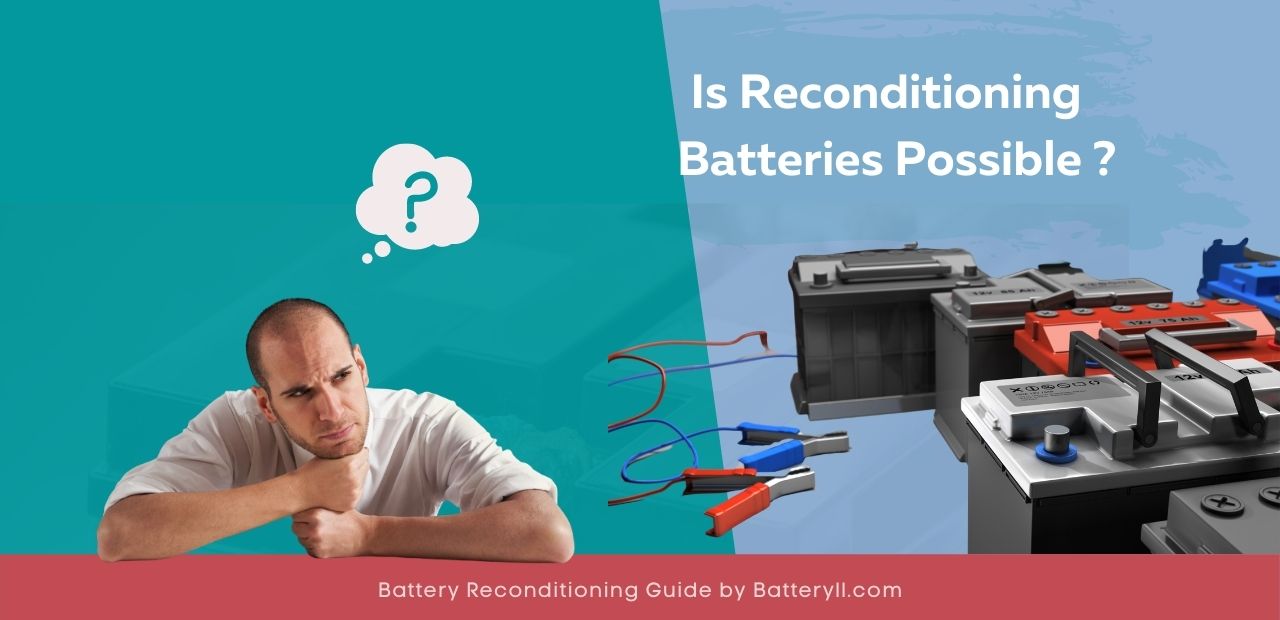
The Ultimate Guide to Reconditioning Old Batteries
In a world increasingly reliant on technology, batteries are the lifeblood of our gadgets and devices. But as these batteries age, their performance deteriorates, leaving us with sluggish phones, dying laptops, and unreliable power sources. However, before you throw away your old batteries and succumb to the allure of new ones, consider the possibility of reconditioning them. Reconditioning can breathe new life into your tired batteries, saving you money and reducing electronic waste.
This comprehensive guide will empower you with the knowledge and techniques to recondition a wide range of batteries, from your phone's lithium-ion battery to your car's lead-acid battery. We'll cover the basics, the tools you'll need, and step-by-step instructions to guide you through the process.
Understanding Battery Types and their Reconditioning Possibilities
Not all batteries are created equal, and their reconditioning capabilities vary significantly. Let's delve into the world of batteries and explore which ones can benefit from a revitalization.
Lead-Acid Batteries
Lead-acid batteries, commonly found in cars and motorcycles, are the most widely reconditioned battery type. They are relatively simple in design, allowing for effective reconditioning with specialized equipment.
Lithium-Ion Batteries
Lithium-ion batteries power our smartphones, laptops, and electric vehicles. While technically challenging, reconditioning lithium-ion batteries is possible but requires specialized equipment and knowledge. It's important to note that attempting to recondition lithium-ion batteries without proper expertise can be dangerous and may result in damage to the battery or even a fire.
Nickel-Cadmium (NiCd) and Nickel-Metal Hydride (NiMH) Batteries
NiCd and NiMH batteries, once common in power tools and other devices, are less frequently reconditioned due to the availability of more efficient lithium-ion batteries. However, they can be reconditioned using techniques similar to those used for lead-acid batteries.
The Tools and Materials You'll Need
Before embarking on your battery reconditioning journey, gather the essential tools and materials to ensure a smooth and safe process. These include:
- A battery charger
- A battery tester
- Distilled water (for lead-acid batteries)
- Safety goggles
- Rubber gloves
- A well-ventilated area
Step-by-Step Guide to Reconditioning Lead-Acid Batteries
Reconditioning lead-acid batteries is a relatively straightforward process, requiring a few key steps.
Step 1: Clean the Battery Terminals
Start by cleaning the battery terminals with a wire brush to remove corrosion and dirt. This ensures optimal electrical conductivity.
Step 2: Charge the Battery
Connect the battery charger to the battery terminals, ensuring correct polarity. Charge the battery at a low rate for an extended period, typically 24 hours or more.
Step 3: Desulfation
Desulfation is the process of removing lead sulfate crystals that accumulate on the battery plates, reducing its capacity. This can be achieved using a desulfation charger, which applies a pulsed DC current to the battery. Note that desulfation chargers can be expensive and may not be necessary for all lead-acid batteries.
Step 4: Test the Battery
After charging and desulfation, test the battery with a battery tester to assess its capacity and performance. If the battery meets your requirements, you can safely use it. If not, you may need to repeat the charging and desulfation process or consider replacing the battery altogether.
Safety Precautions
Battery reconditioning involves working with potentially hazardous materials, so it's crucial to prioritize safety. Always wear safety goggles and rubber gloves when handling batteries and their components. Ensure proper ventilation and avoid contact with battery acid.
Remember that lithium-ion batteries pose a greater safety risk due to their flammable nature. Only attempt reconditioning lithium-ion batteries with specialized equipment and under the guidance of experienced professionals. It's best to consult a qualified battery technician or manufacturer for specific instructions and safety guidelines.
Conclusion
Reconditioning old batteries can be an economical and eco-friendly way to extend their lifespan. By understanding the process, gathering the necessary tools, and taking appropriate safety precautions, you can breathe new life into your tired batteries and reduce your dependence on new ones. Remember to choose the right reconditioning method for each battery type and always prioritize safety throughout the process.
0 comments:
Post a Comment
Note: Only a member of this blog may post a comment.